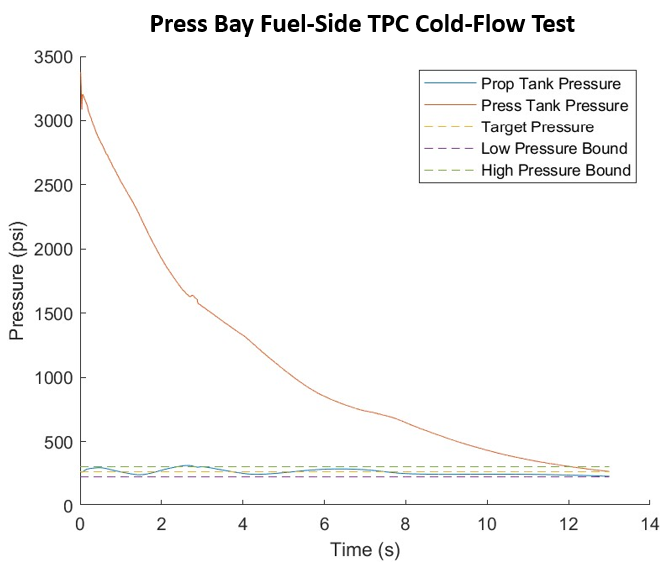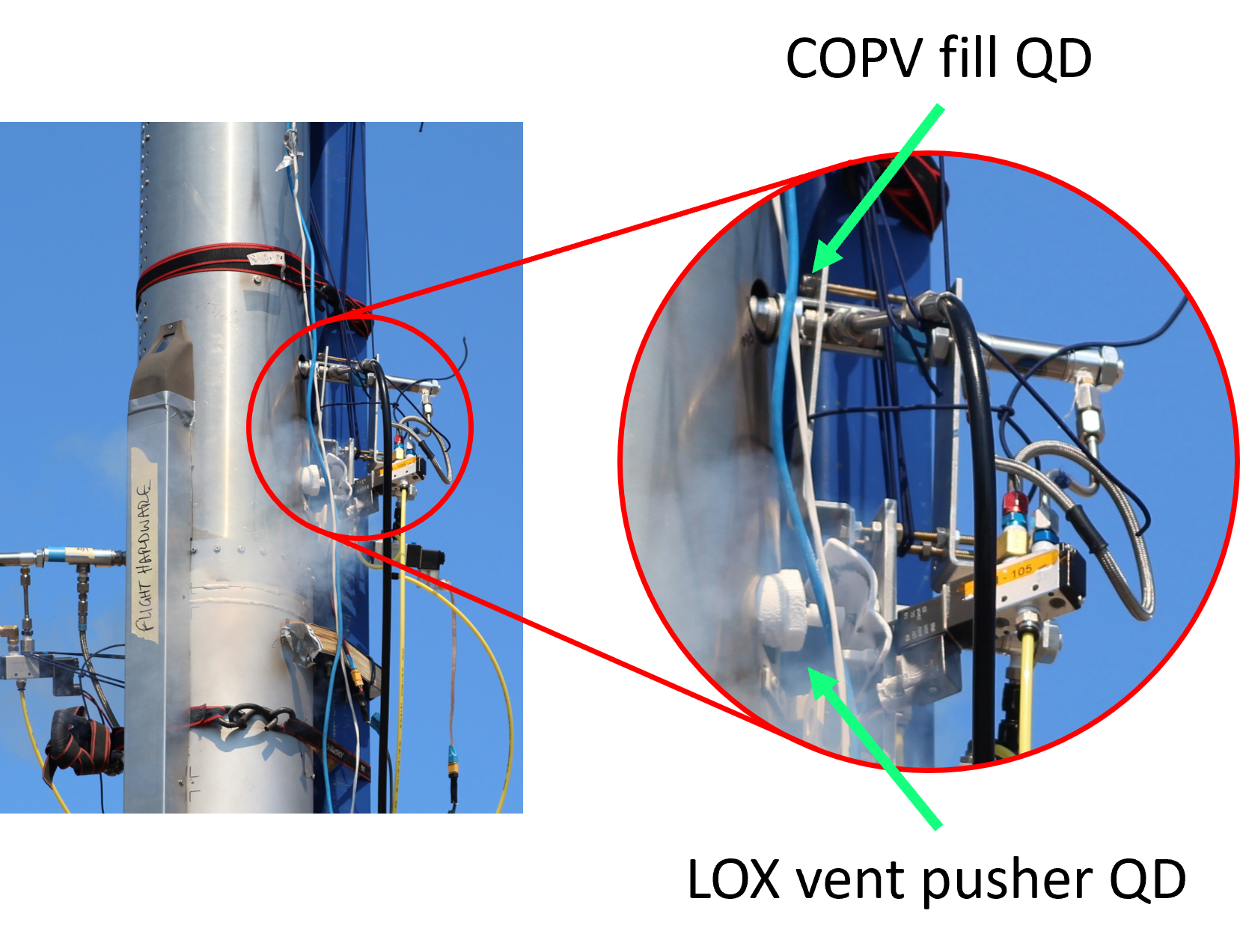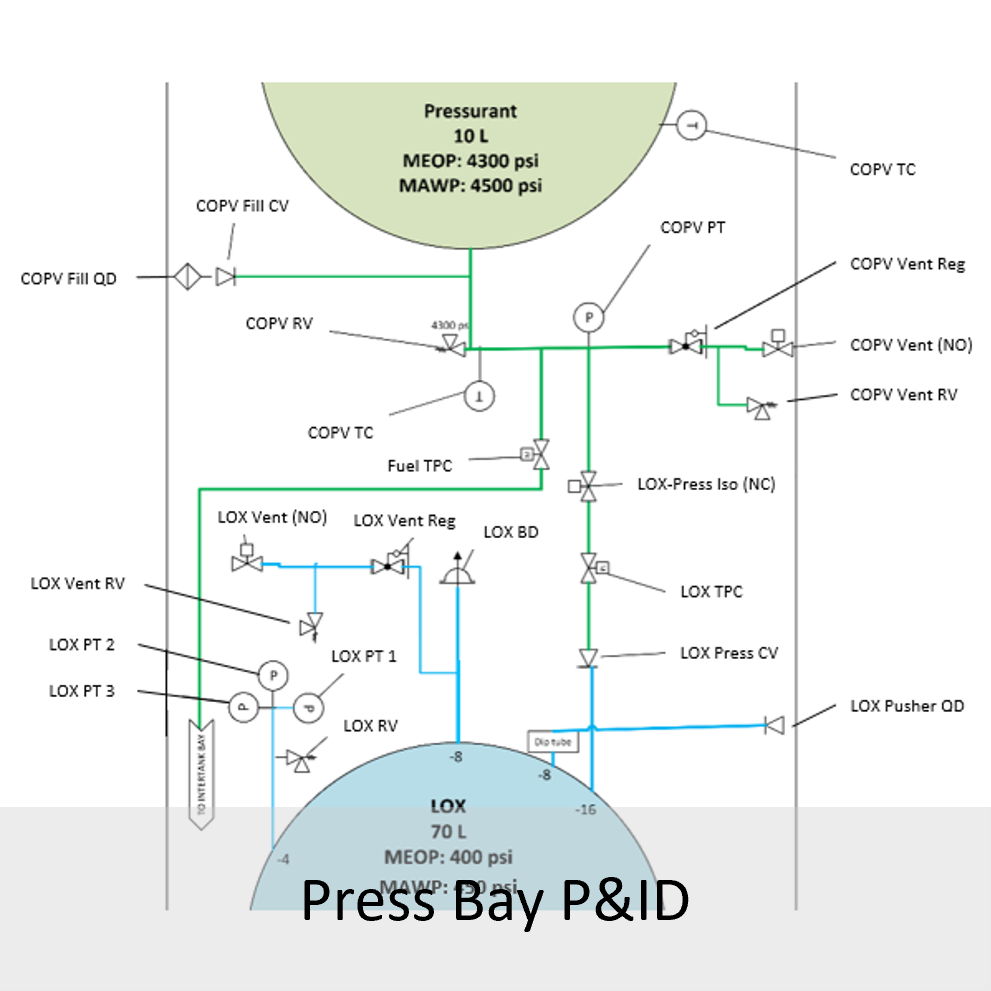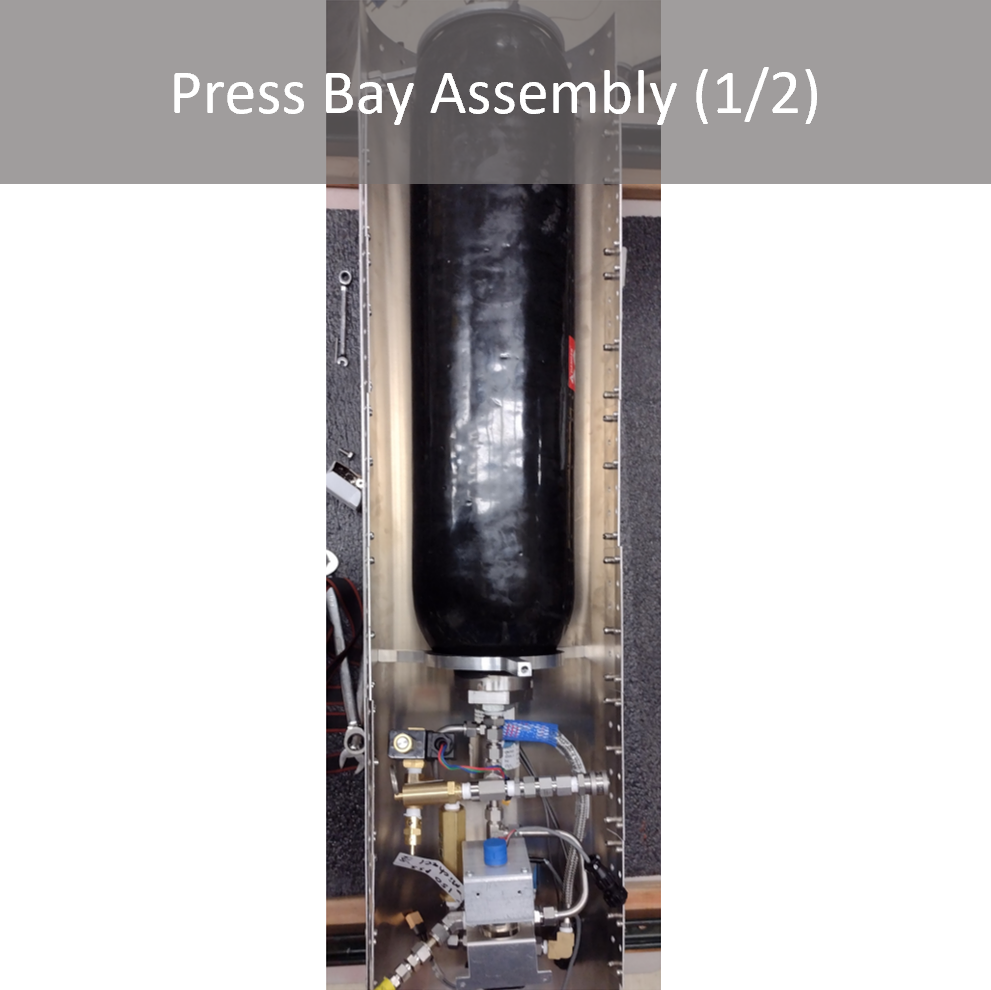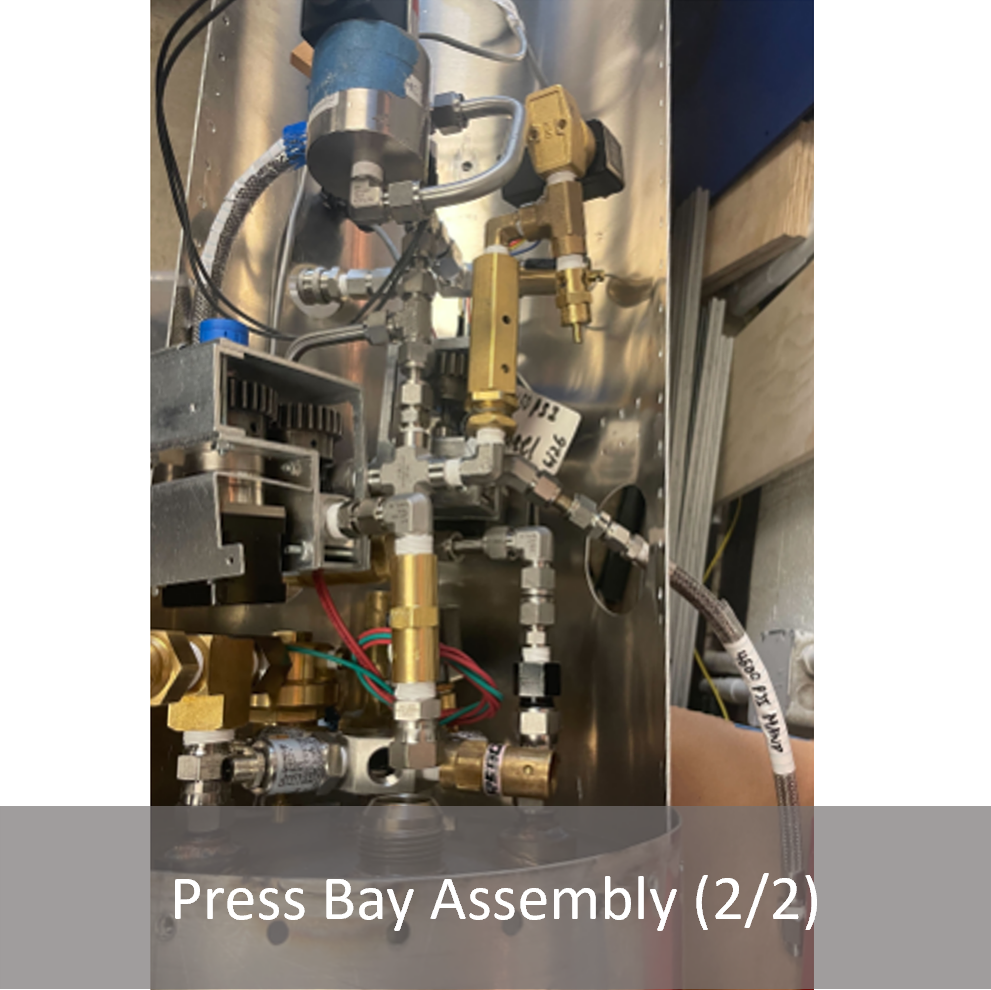
Rocket fluid system design
overview
The Press Bay was the portion of the pressure-fed kerolox rocket Clementine which housed all piping and instrumentation related to propellant tank pressurization. It contained a fluid network for interfacing:
10L COPV pressurized with nitrogen gas (GN2) to 4500 psig
Custom Tank Pressure Control (TPC) system
RP-1 and LOX tank ullages
GN2 fill QD and venting systems
LOX pusher QD and venting systems
my role
I led the design of the Press Bay, which involved:
Fluid network CAD creation and maintenance
Safety valve and rupture disk sizing
Fluids analysis for low-level system trades
Maintenance of engineering BOM
Preparation and presentation of system design reviews
outcome
A high pressure cold-flow test of the Press Bay assembly (below left) demonstrated the success of several design features:
Pressure retention (leak rate below acceptable maximum)
Pressure transducer positioning
Relief valve/rupture disk sizing (no actuation below desired threshold)
Several other Press Bay features were verified in a later test of the full-stack rocket assembly (below right):
GN2 fill QD and venting systems
LOX vent pusher QD
top skills utilized
cad (Siemens nx/teamcenter)
Fluid system design
fluid network modeling/analysis
Safety valve/rupture disk sizing
technical details
Clementine was a 20-ft tall single-stage sounding rocket that was designed, built, and launched between 2021-2023 by UM’s student rocketry team, MASA. It was launched off the Microcosm launch rail at Friends of Amateur Rocketry (FAR) in California on May 2023. The propulsion system consisted of a liquid bipropellant regeneratively-cooled engine pressure-fed by a COPV. The pressurant was gaseous nitrogen (GN2), and the propellants were RP-1 and liquid oxygen (LOX).
The Press Bay was the portion of the rocket between the Avionics bay and the LOX tank designed to house the flight COPV, two custom motorized needle valves for regulating propellant tank pressures, and all of the piping and instrumentation related to propellant tank pressurization, COPV and LOX tank over pressurization prevention, and ground support COPV fill + vent and LOX tank vent systems. The Press Bay airframe clocking was requirements were driven by FAR site launch rail dimensions, while several safety requirements were also driven by site guidelines.
Plumbing and instrumentation diagram (p&id)
COPV Fill QD: Remotely actuated quick-disconnect coupling for GN2 filling operations
LOX Pusher QD: Remotely actuated quick-disconnect coupling for venting GOX during filling operations
COPV/LOX Vent: Plumbing assemblies for remote manual venting of high-pressure gas during pre-press operations
Regulators reduce vent valve solenoid size requirements
Trade-off: Relief valve required to prevent over pressurization if regulator fails open
LOX PT 1/2/3: Single fault tolerant LOX tank pressure sensing ensured by using the median of 3 sensor readings

